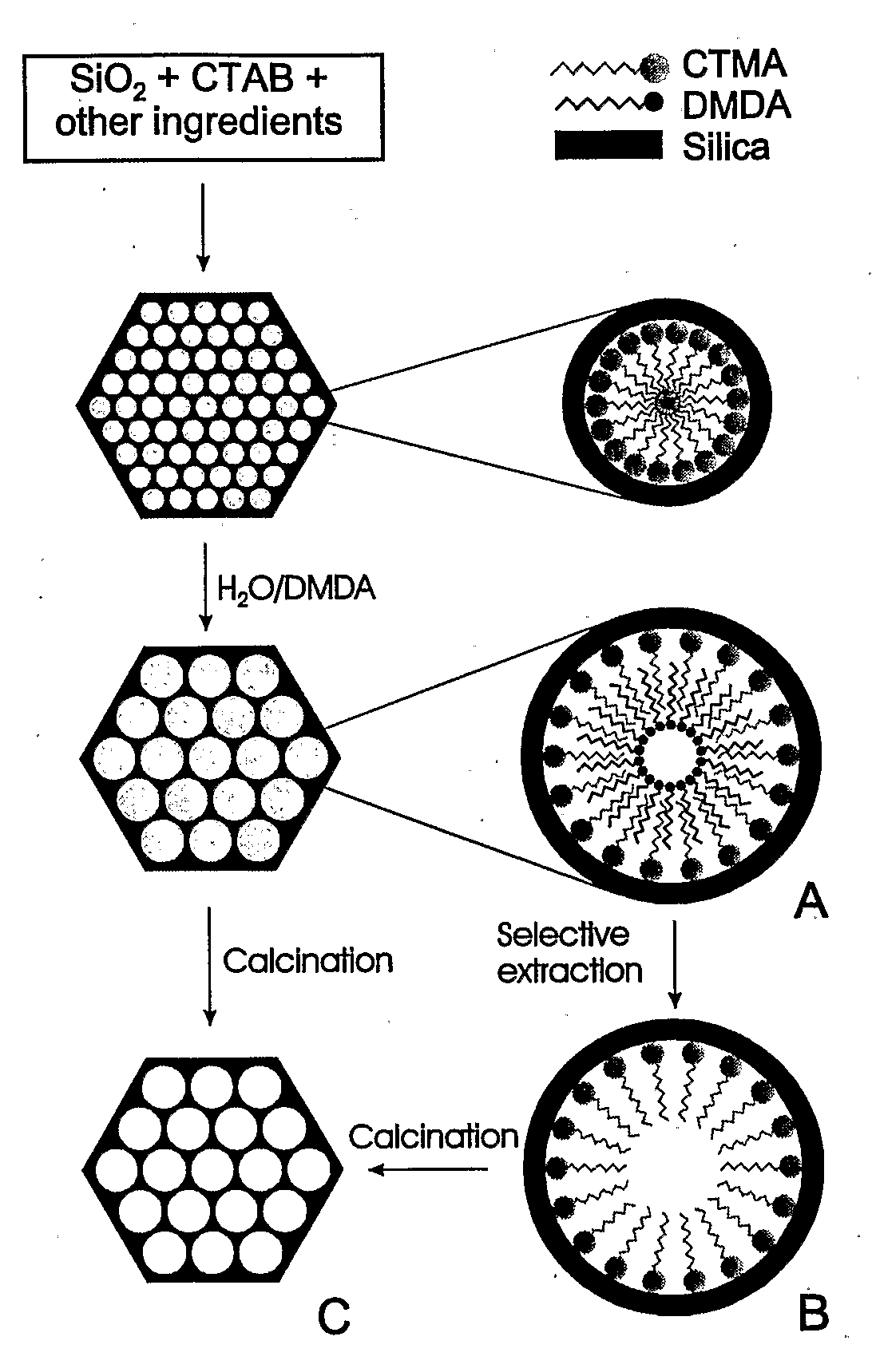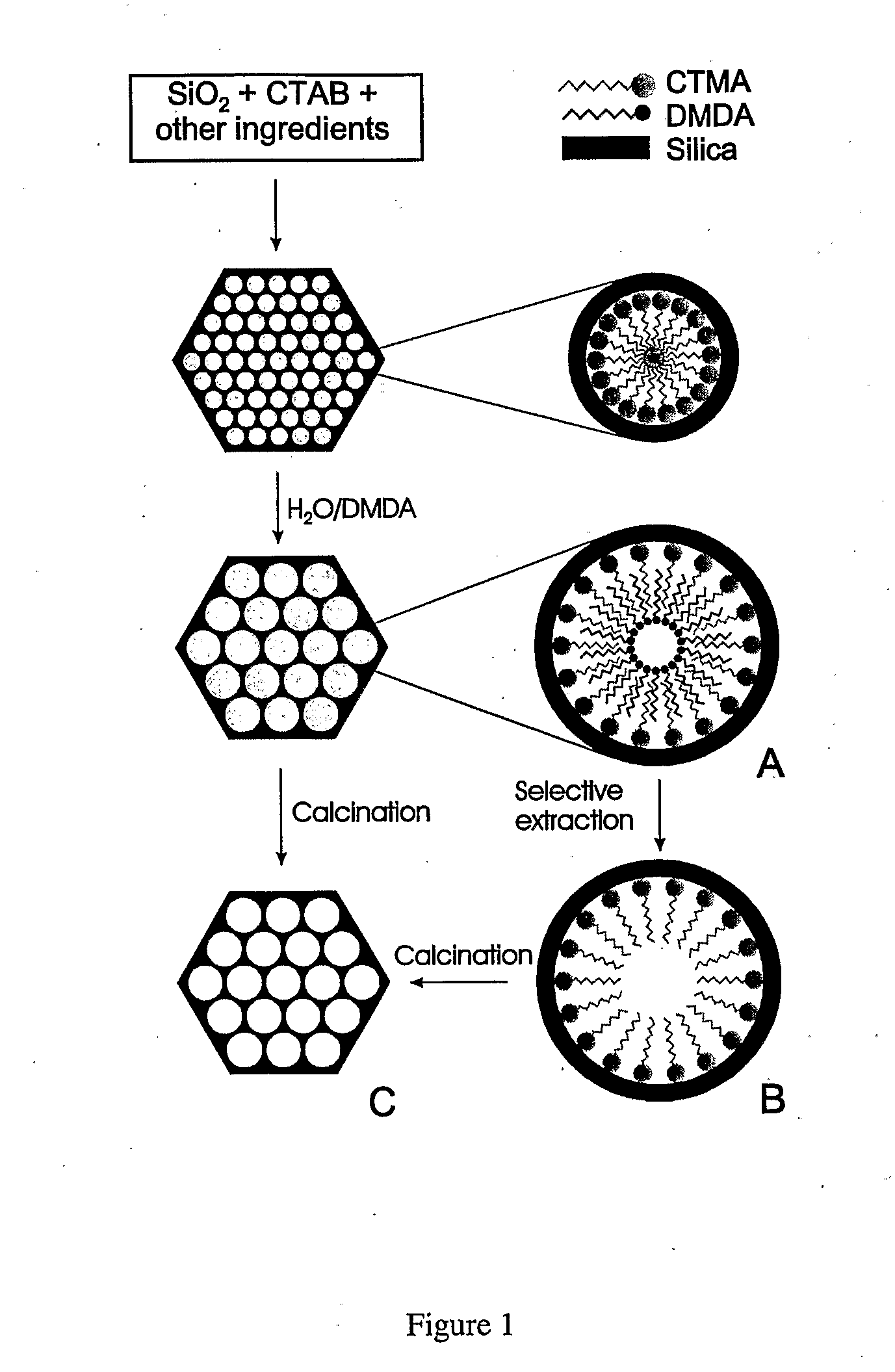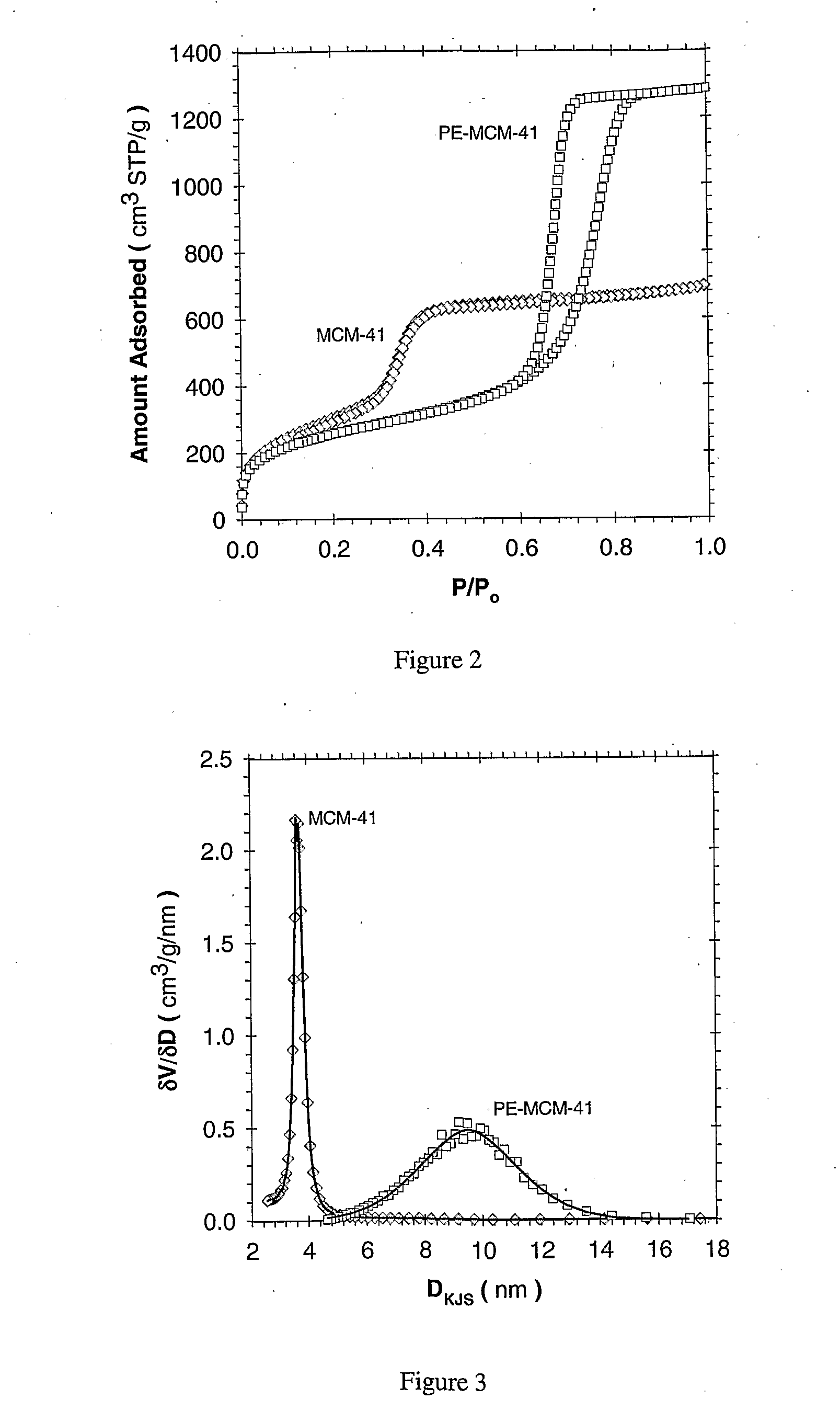Functionalized Adsorbent for Removal of Acid Gases and Use Thereof
a technology of acid gas removal and functionalized adsorbents, which is applied in the field of adsorbents, can solve the problems of reduced capacity, insufficient economics of the process to offset the capture cost, and insufficient dynamic efficiency of the separation medium being used
- Summary
- Abstract
- Description
- Claims
- Application Information
AI Technical Summary
Benefits of technology
Problems solved by technology
Method used
Image
Examples
example 1
[0110]Adsorbent Prepared Using Direct Loading: The present example makes use of periodic mesoporous silica (PE-MCM-41) whose pores have been further expanded through post-synthesis treatment as described elsewhere (Sayari et al., 1998; Sayari et al., 1999; Kruk et al., 1999; Sayari, 2000; Kruk et al., 2000; Kruk et al., 2002). As shown in FIG. 1, the PE-MCM-41 silica used in this study was prepared using a two-step methodology consisting of (i) synthesis of MCM-41 at relatively low temperature, typically 70-100° C., then (ii) post-synthesis hydrothermal treatment of the as-synthesized silica mesophase in an aqueous emulsion of long chain N,N-dimethylalkylamine, typically at 120-130° C. for different periods of time. Depending on the conditions of both steps, materials with controlled pore sizes from 3.5 to 25 nm can be obtained. The pore volume varied accordingly from typically 0.7 to 3.6 cm3 / g, whereas the specific surface areas of 800-1500 m2 / g were not drastically affected (Kruk ...
example 2
[0133]Adsorbent Prepared via Post Synthesis Grafting: Enhancement Effect of Using Pore Expanded MCM-41: The MCM-41 and pore-expanded MCM-41 (PE-MCM-41) materials were prepared according to the methods previously described. All materials were calcinated in flowing N2 under a thermal ramp rate of 1° C. / min to 550° C., and then held in air for 5.0 hours. The materials were then transferred, hot, to a sealed container until their use. A brief summary of the material characteristics, as obtained by N2 adsorption (77 K) are given in Table 2.
[0134]For all the grafted materials, the reagents were all purchased from Sigma-Aldrich and used as supplied with no further treatment. The following lists the compounds that were used with their respective purities and the acronym applied for identification in this study, toluene (99% ACS grade), pentane (99% ACS Grade), and 3-[2-(2-aminoethylamino) ethylamino] propyl-trimethoxysilane, (Tech) herein referred to as TRI.
[0135]In order to introduce the a...
example 3
[0160]Adsorbent prepared via post synthesis grafting: Comparison of Mono, Di, and Triamine grafting: The MCM-41 and PE-MCM-41 materials used in this example were prepared according to the methods described previously. All reagents used for the synthesis of grafted materials were purchased from Sigma-Aldrich and used as supplied with no further treatments. The following lists the compounds that were used with their respective purities and the acronym applied for identification in this study, water, distilled and di-ionized Toluene, 99% ACS grade, Pentane, 99% ACS Grade, 3-(aminopropyl) trimethoxysilane, 97% (referred to as MONO), [3-(2-aminoethylamino) propyl]trimethoxysilane, 97% (referred to as DI), 3-[2-(2-aminoethylamino) ethylamino] propyl-trimethoxysilane, Tech (referred to as TRI).
[0161]The amine functionality was introduced into the MCM-41-based materials via the post synthesis grafting technique. Two procedures were used. The first, and most common method is referred to as t...
PUM
| Property | Measurement | Unit |
|---|---|---|
| pore diameter | aaaaa | aaaaa |
| pore diameter | aaaaa | aaaaa |
| temperatures | aaaaa | aaaaa |
Abstract
Description
Claims
Application Information
 Login to View More
Login to View More - R&D
- Intellectual Property
- Life Sciences
- Materials
- Tech Scout
- Unparalleled Data Quality
- Higher Quality Content
- 60% Fewer Hallucinations
Browse by: Latest US Patents, China's latest patents, Technical Efficacy Thesaurus, Application Domain, Technology Topic, Popular Technical Reports.
© 2025 PatSnap. All rights reserved.Legal|Privacy policy|Modern Slavery Act Transparency Statement|Sitemap|About US| Contact US: help@patsnap.com



